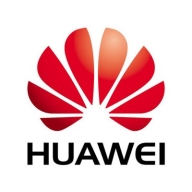

Huawei Wireless and Cambium Networks Wireless LAN are competitive products in the wireless LAN category. Huawei Wireless seems to have the advantage due to its rapid setup, coverage, and technology integration.
Features: Huawei Wireless is praised for its rapid setup, affordability, and excellent coverage with WiFi 6 technology. It enables seamless roaming and integrates with IoT and cloud services. Cambium Networks Wireless LAN highlights its autonomous network architecture, removing the need for a controller, distributed network management, and extensive outdoor coverage.
Room for Improvement: Huawei Wireless needs improvement in scalability for SMBs, integration with third-party solutions, and consistent support, especially after-sales. Cambium Networks Wireless LAN faces challenges with pricing, efficient use of APs in large areas, and bandwidth management, along with enhanced multimedia analysis.
Ease of Deployment and Customer Service: Huawei Wireless supports both on-premises and public cloud deployments, though it is more common on-premise. Customer service has mixed reviews, noted for being competent but often slow. Cambium Networks Wireless LAN offers hybrid cloud support, simplifying deployment with cloud-based management. Although their support is generally helpful, response delays have been mentioned.
Pricing and ROI: Huawei Wireless is considered cost-effective compared to Cisco and Aruba, with affordable licensing options contributing to a high ROI. Though deemed expensive in certain scenarios, its overall return is positive. Cambium Networks Wireless LAN has a mixed reputation, with high initial costs like Cisco, but offers cost-effectiveness in long-term deployments without license fees.


We monitor all Wireless LAN reviews to prevent fraudulent reviews and keep review quality high. We do not post reviews by company employees or direct competitors. We validate each review for authenticity via cross-reference with LinkedIn, and personal follow-up with the reviewer when necessary.